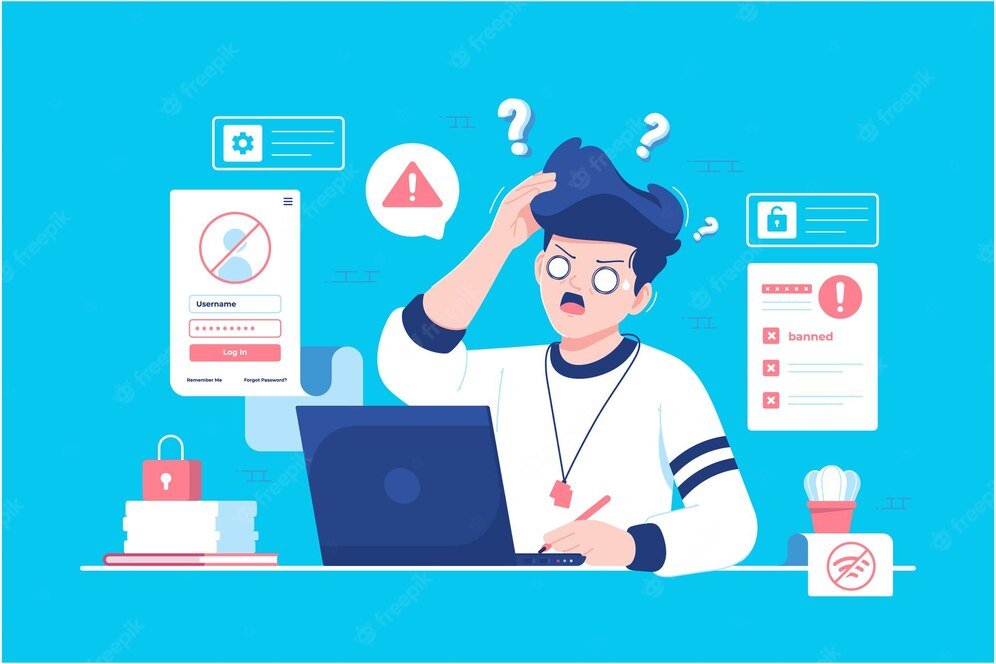Amazon retail stores are starting to pop up all over the place, with the first one opening in New York City last year. But even though Amazon is having a huge impact on the way we shop for books, furniture, and electronics. It’s still primarily an online retailer. As such, it relies on algorithms and other automated systems to police its marketplace and make sure everything is kosher. If you get an amazon account suspension (or any other e-commerce platform). It’s crucial that you understand why so you can prevent future suspensions or avoid getting ban altogether.
If this happens to you or your business partner(s), read on! We’ll explain what most commonly triggers suspension on Amazon—and how to fix these issues before they become huge problems down the line.
Inauthentic Item Claims
Inauthentic item claims are one of the most common reasons that sellers get amazon account suspension. An inauthentic item claim occurs. When a buyer purchases an item with the intent to return it, and then reports that item as “Counterfeit” or “Not As Described.”
so, only sell products that have been officially license or approve by the manufacturer. This includes products like DVDs, video games, etc. which may be subject to copyright infringement laws if they’re not genuine copies.
Contact your supplier directly if there is any doubt about whether your suppliers’ merchandise is authentic or not—they will be able to provide you with this information as well as help support your listing by providing catalogs and pictures of their own stock so Amazon doesn’t raise a red flag during their product inspection process (which we’ll discuss later). This can also help avoid situations where Amazon believes your items are counterfeit even though they actually aren’t!
Selling Restricted Products
If you don’t know what you’re selling, it may be best to just avoid selling it altogether. unsure about whether or not something is restrict. use Google’s search bar and type in the name of your product along with “Amazon”. If there are no results for your query, then chances are it’s safe to sell on Amazon. However, if there are multiple listings for your item already up on Amazon’s website, proceed with caution!
Intellectual Property Infringement
Intellectual property infringement is a big no-no. When you’re selling products on Amazon, it’s important to make sure that you aren’t using images or content that belongs to someone else. You could get sue or your account suspended if you take images from other websites and use them in your marketing efforts.
Fortunately, there are some easy ways to avoid this problem altogether. Use stock photos that are free of charge. This can be a good way to keep costs down while still getting high-quality images for your product listings. In order for an image not to be consider copyright infringement,
it needs only one of these five elements: non-originality (such as commonly accepted trademarks), public domain status (ideas), merger doctrine (pictures used in clear reference), fair use doctrine (educational purposes), and parody law (satire). Of course the more originality your product has will give more protection against intellectual property claims.so try not to copycat too much when creating new products!
Misrepresenting Item Condition Is Reason For Amazon Account Suspension
Misrepresenting the item condition is a common reason for Amazon account suspension. There are several types of item conditions, and it’s important to know what each one means.
- New: This product is unopen and has not been used or installed. It may be missing parts or packaging material.
- Used: This item has been previously used but has been fully cleaned, repaired, and tested by the manufacturer to ensure that it works properly with no faults or defects.
- Refurbished: A refurbished product is one that was returned by a customer, repaired by the manufacturer and then resold as a new product at a discounted price compared to its original purchase price.” Like new” refers to an item that appears virtually unused but shows some signs of wear such as scratches in the exterior casing due to normal use.
Inaccurate Product Information
Misrepresenting product information is a violation of the Amazon A-to-Z Guarantee, which means that you have to stand behind your products. You might need to refund customers and send new merchandise if they make claims due to inaccurate product information.
Intentionally misrepresenting product information on Amazon to garner positive reviews can also lead to suspension. The company prohibits sellers from engaging in any activity designed to manipulate public feedback or create the illusion of a more favorable rating score through non-organic means.
Lastly, misrepresenting a product’s condition or quality is prohibited under the Prohibited Seller Activities Policy.
Order Defect Rate Exceeds Acceptable Percentages
The order defect rate is the percentage of orders that have a defect. It’s calculat by taking the total number of defects and dividing it by the total number of orders shipped. An acceptable order defect rate varies depending on your industry, but for most sellers it’s between 1% and 2%.
If you find yourself above 2%, there are things you can do to reduce it. Invest in better quality control procedures. When products are damage or defective upon arrival, they’re considere “defective.” This can happen at any stage in their journey from purchase to shipment. Ensure you have processes in place to detect these issues before they result in entire shipments being returned or marked as unfulfilled merchandise.
Conclusion
We hope that this blog post has helped you get a better idea of what exactly causes your Amazon Suspension. If you want to know more about how to avoid getting suspended from Amazon in the future, please contact us today and also visit our amazon account suspension section.
Read About: Amazon Case Study


